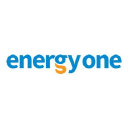Andlauer Healthcare Group Inc
TSX:AND

| US |

|
Johnson & Johnson
NYSE:JNJ
|
Pharmaceuticals
|
| US |

|
Berkshire Hathaway Inc
NYSE:BRK.A
|
Financial Services
|
| US |

|
Bank of America Corp
NYSE:BAC
|
Banking
|
| US |

|
Mastercard Inc
NYSE:MA
|
Technology
|
| US |

|
UnitedHealth Group Inc
NYSE:UNH
|
Health Care
|
| US |

|
Exxon Mobil Corp
NYSE:XOM
|
Energy
|
| US |

|
Pfizer Inc
NYSE:PFE
|
Pharmaceuticals
|
| US |

|
Palantir Technologies Inc
NYSE:PLTR
|
Technology
|
| US |

|
Nike Inc
NYSE:NKE
|
Textiles, Apparel & Luxury Goods
|
| US |

|
Visa Inc
NYSE:V
|
Technology
|
| CN |

|
Alibaba Group Holding Ltd
NYSE:BABA
|
Retail
|
| US |

|
JPMorgan Chase & Co
NYSE:JPM
|
Banking
|
| US |

|
Coca-Cola Co
NYSE:KO
|
Beverages
|
| US |

|
Walmart Inc
NYSE:WMT
|
Retail
|
| US |

|
Verizon Communications Inc
NYSE:VZ
|
Telecommunication
|
| US |

|
Chevron Corp
NYSE:CVX
|
Energy
|
Utilize notes to systematically review your investment decisions. By reflecting on past outcomes, you can discern effective strategies and identify those that underperformed. This continuous feedback loop enables you to adapt and refine your approach, optimizing for future success.
Each note serves as a learning point, offering insights into your decision-making processes. Over time, you'll accumulate a personalized database of knowledge, enhancing your ability to make informed decisions quickly and effectively.
With a comprehensive record of your investment history at your fingertips, you can compare current opportunities against past experiences. This not only bolsters your confidence but also ensures that each decision is grounded in a well-documented rationale.
Do you really want to delete this note?
This action cannot be undone.

| 52 Week Range |
37.5445
54.97
|
| Price Target |
|
We'll email you a reminder when the closing price reaches CAD.
Choose the stock you wish to monitor with a price alert.

|
Johnson & Johnson
NYSE:JNJ
|
US |

|
Berkshire Hathaway Inc
NYSE:BRK.A
|
US |

|
Bank of America Corp
NYSE:BAC
|
US |

|
Mastercard Inc
NYSE:MA
|
US |

|
UnitedHealth Group Inc
NYSE:UNH
|
US |

|
Exxon Mobil Corp
NYSE:XOM
|
US |

|
Pfizer Inc
NYSE:PFE
|
US |

|
Palantir Technologies Inc
NYSE:PLTR
|
US |

|
Nike Inc
NYSE:NKE
|
US |

|
Visa Inc
NYSE:V
|
US |

|
Alibaba Group Holding Ltd
NYSE:BABA
|
CN |

|
JPMorgan Chase & Co
NYSE:JPM
|
US |

|
Coca-Cola Co
NYSE:KO
|
US |

|
Walmart Inc
NYSE:WMT
|
US |

|
Verizon Communications Inc
NYSE:VZ
|
US |

|
Chevron Corp
NYSE:CVX
|
US |
This alert will be permanently deleted.
Andlauer Healthcare Group Inc
Andlauer Healthcare Group Inc. operates within the specialized realm of healthcare logistics and transportation, commanding its niche with precision and efficiency. Founded in 1991, the company has carved a distinct position in the Canadian market, known for its tailored solutions that meet the complex demands of the healthcare sector. From pharmaceutical companies to biotechnology firms, Andlauer serves clients who rely on the timely and secure transportation of sensitive healthcare products. With a network of temperature-controlled transportation and warehousing facilities, the company ensures that critical shipments maintain their integrity throughout their journey. This specialization not only supports the compliance needs of their customers but also positions Andlauer as an indispensable partner in the healthcare supply chain.
Revenue generation for Andlauer primarily stems from its comprehensive suite of logistics and transportation services, which are tailored specifically for the nuances of the healthcare industry. By offering end-to-end solutions that encompass distribution, specialized transport, and dedicated warehousing, the company captures diverse streams of income within this highly regulated sector. Additional value comes from their technology-driven approach, harnessing data and analytics to optimize routing and improve supply chain visibility. Through strategic acquisitions and partnerships, Andlauer continues to expand its footprint, enhancing service capabilities and geographical reach. This calculated growth strategy not only solidifies its market leadership but also fortifies its financial performance in a rapidly evolving industry landscape.
Andlauer Healthcare Group Inc. operates within the specialized realm of healthcare logistics and transportation, commanding its niche with precision and efficiency. Founded in 1991, the company has carved a distinct position in the Canadian market, known for its tailored solutions that meet the complex demands of the healthcare sector. From pharmaceutical companies to biotechnology firms, Andlauer serves clients who rely on the timely and secure transportation of sensitive healthcare products. With a network of temperature-controlled transportation and warehousing facilities, the company ensures that critical shipments maintain their integrity throughout their journey. This specialization not only supports the compliance needs of their customers but also positions Andlauer as an indispensable partner in the healthcare supply chain.
Revenue generation for Andlauer primarily stems from its comprehensive suite of logistics and transportation services, which are tailored specifically for the nuances of the healthcare industry. By offering end-to-end solutions that encompass distribution, specialized transport, and dedicated warehousing, the company captures diverse streams of income within this highly regulated sector. Additional value comes from their technology-driven approach, harnessing data and analytics to optimize routing and improve supply chain visibility. Through strategic acquisitions and partnerships, Andlauer continues to expand its footprint, enhancing service capabilities and geographical reach. This calculated growth strategy not only solidifies its market leadership but also fortifies its financial performance in a rapidly evolving industry landscape.
Record Revenue: Andlauer Healthcare Group reported record annual revenue of $650.5 million, driven by strong growth in Canadian operations.
Margin Stability: EBITDA margin for the year was 25.3%, in line with the company’s target range of 24%–26%.
Canadian Growth: Canadian Ground Transportation revenue (excluding fuel) rose 6.3% in Q4, offsetting weakness in U.S. operations.
U.S. Headwinds: U.S.-based truckload revenue dropped 17% in Q4, with EBITDA from Boyle Transportation and Skelton USA down $2.5 million year-over-year.
Packaging Turnaround: Packaging Solutions revenue was up 25% year-over-year in Q4, showing signs of momentum with client demand.
EPS Growth: Diluted earnings per share for the year increased to $1.58 from $1.55 last year, boosted by share buybacks.
Dividend Increase: Quarterly dividend was raised to $0.12 per share.
CapEx Guidance: 2025 capital expenditures expected to be consistent with 2024, around $17.6 million to under $20 million, split roughly 50-50 between maintenance and growth.
Solid Outlook: Management expects organic growth in Canada to continue at mid- to high-single-digit rates, with U.S. operations stabilizing by year-end.








































